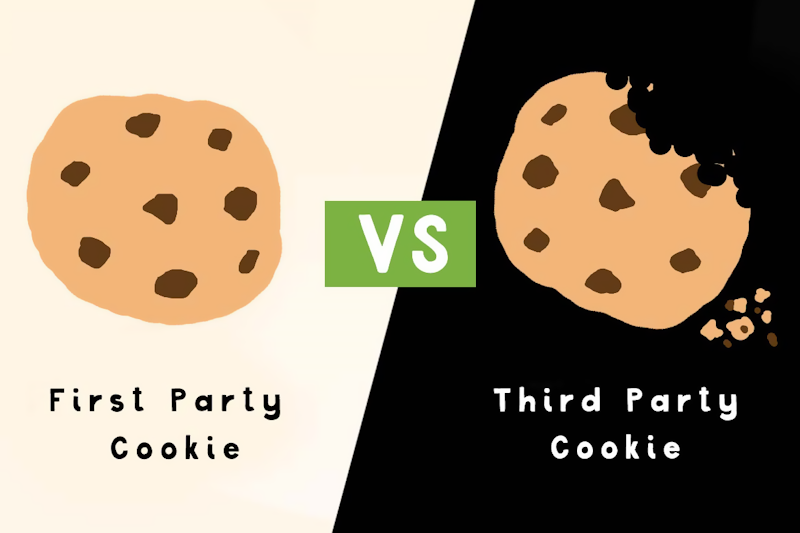Before we delve into the future of web cookies, we need to understand the core concepts that have significantly shaped the digital landscape. Imagine web cookies as the backstage crew of the internet, working behind the scenes on your computers and devices. They’re like digital helpers, making sure everything runs smoothly—from proving your online identity to personalizing your web adventures and even managing your virtual shopping bags. Now, as the spotlight shifts to online privacy, let’s zoom in on the key players: first-party and third party cookies.
Understanding Web Cookies
Web cookies can be broadly categorized into two main types: first-party cookies and third-party cookies. Both play a pivotal role in enhancing the online user experience, but their purpose and potential implications differ.

First-Party Cookies
First-party cookies are temporary and serve the purpose of managing information within a single browsing session. They are responsible for tasks like user login and retaining the contents of our shopping cart. What sets them apart is that they automatically delete when our browsing session ends, thereby preserving our privacy.
Third-Party Cookies
On the other hand, third-party cookies, also known as tracking cookies, have a longer lifespan and store data for extended periods. They remember user preferences and track behaviour for analytics and targeted advertising. While they offer convenience and personalization, they raise privacy and security concerns. Furthermore, they may require regulatory compliance due to their prolonged presence on our devices.
The Changing Digital Landscape
In recent times, prominent web browsers, including Apple’s Safari and Mozilla’s Firefox, have already initiated steps to restrict third-party cookies. Google Chrome, with its extensive user base, announced its plans to phase out third-party cookies in January 2020. This move aligns with Google’s hard efforts to enhance user privacy and web security.
Google’s Approach
Google introduced the Privacy Sandbox, a project aimed at developing privacy-preserving alternatives to third-party cookies. Their plan involves a gradual transition to minimize disruptions and exploring alternatives like Topics API, which balances user privacy and effective advertising. Google actively collaborates with industry partners, regulators, and privacy advocates to find a harmonious equilibrium between user privacy and the needs of the digital advertising industry.

The Future of Online Advertising
The imminent phasing out of third-party cookies, particularly in Google Chrome, underscores a growing emphasis on user privacy. Advertisers must adapt by focusing on obtaining user consent and enhancing transparency. This shift brings challenges, but it also opens up chances for advertisers to show they can be trusted and use better-quality data. Even though it might be tricky, these changes offer opportunities for brands to grow and get more value from their advertising efforts. As we move away from old ways of tracking data, a new era in digital marketing is beginning, pushing marketers to be more creative, respectful, and focused on making meaningful connections with users!
In Conclusion
We’re entering a cookieless future, marked by the change of online ads. Major web browsers and Google are reshaping the digital landscape, ushering in an era free from traditional tracking methods. As we navigate this evolution, safeguarding user privacy becomes paramount. For the next generation of tech enthusiasts, exploring new paths in online advertising is important. The cookie-free future signifies more than a departure from the past; it’s a convergence of privacy and innovation. Advertisers need to be creative, using things like artificial intelligence for personalized ads that still keep user information safe. In this paradigm, cutting-edge technology and a heightened commitment to user privacy define progress, creating a landscape where privacy and innovation coalesce seamlessly.



